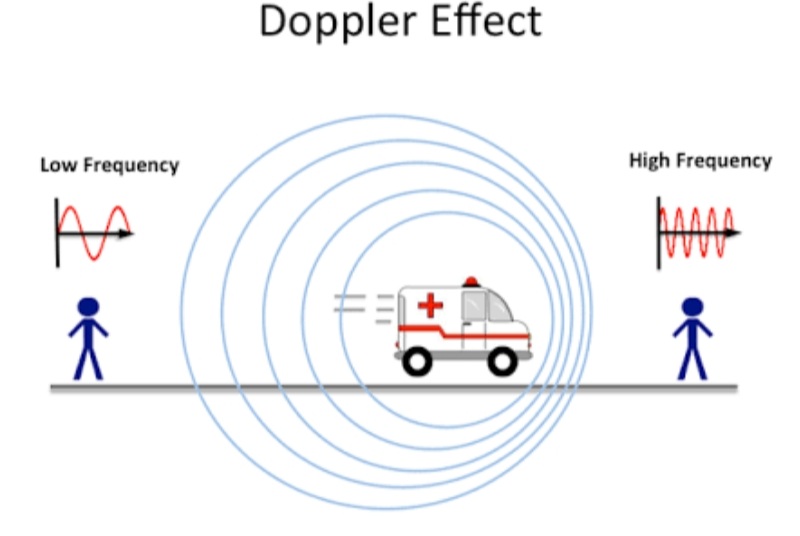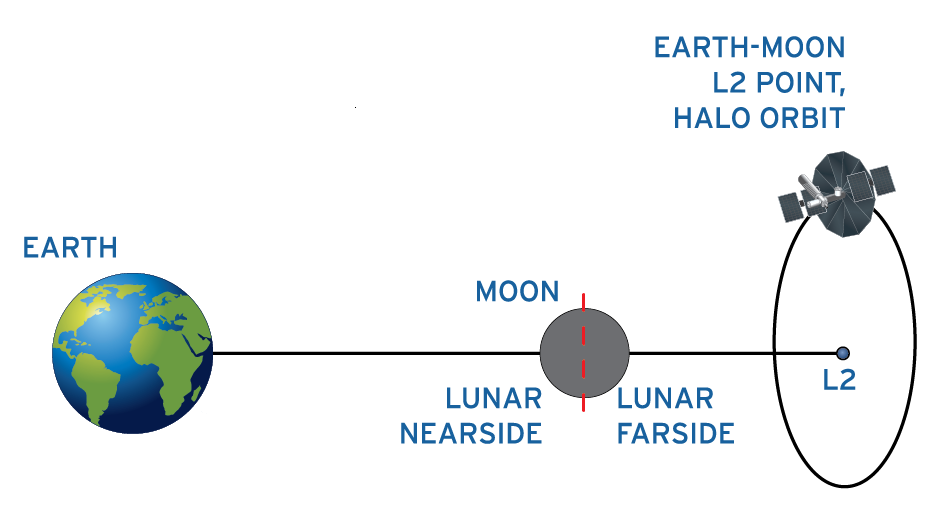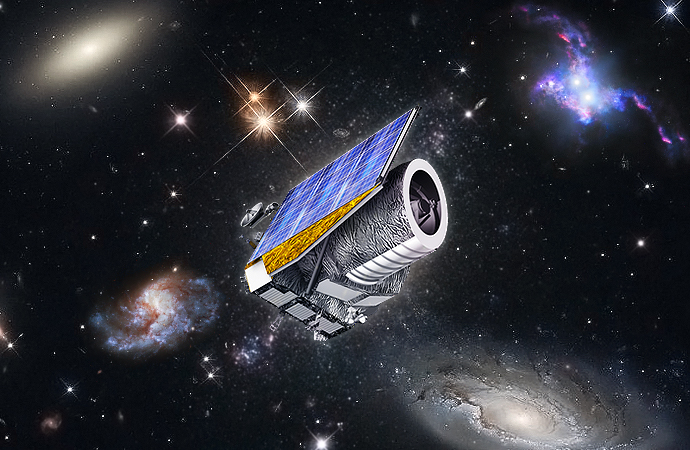The European Space Agency is ready to launch the first space telescope designed to investigate the nature of dark energy. Scientists have named it Euclid to honor the Greek mathematician, the father of geometry. The reason for choosing this name is that the best available theoretical framework to study the universe at cosmological distances is general relativity, which states that the mass and energy distribution in the universe determines the geometry of space-time.
But what exactly will this telescope observe to understand dark energy? To answer this, let’s first talk about music and the color of the stars.
A sublime experiment
There is no doubt that nothing beats music when studying sound. We relate the intensity of the sound to the energy per unit of time transmitted when we play, say, the string of a guitar. The timbre is related to the nature of the instrument’s material. The pitch is a manifestation in our ears of the frequencies of the sound waves. If the pitch is high, we say the frequency is high; if the pitch is low, we say that the frequency is low.
But how we perceive sound also depends on the relative movement between our ears and the sound source. This fact was discovered by the Austrian physicist Christian Doppler. Doppler was born and raised in Salzburg at the beginning of the 19th century, where the magic of music touched him.
Doppler came up with the hypothesis that the frequency of the sound waves would change if the source is moving with respect to the receiver. To test his idea, he hired an orchestra to play in an open railroad car, gave the musicians a single note to play, and asked the conductor to move away and approach at different speeds. Meanwhile, on the ground, other musicians recorded on paper the note that their ears picked up.
Doppler showed that, indeed, such a correspondence between the note recorded and the speed of the moving concert exists. This phenomenon is called the Doppler effect. Today it is very well established, and it is used to measure the speed of airplanes, cars, bicycles, etc. If the sound source gets closer, the frequency increases: the pitch is heard higher. If you move away, the pitch is heard lower. An everyday example of the ambulance passing by your street, you can listen to the difference between when it is coming and when it is leaving.

Colors of the universe
As a scientist full of curiosity, Christian Doppler’s ambitions were beyond this world: he wanted to understand the skies. He speculated that color is a manifestation of the frequency of light waves in the eye of the beholder, as are the notes to the ear. In a treatise he wrote in 1842[1], Doppler hypothesized that light colors in the stars should change if the star approaches or moves away from the Earth.
In 1868, British astronomer William Huggins used the redshift due to the Doppler effect to calculate the velocity of a star moving away from the Earth.
But how do astronomers know that the colors they see from the stars are actually shifted and not the original? Astronomers use spectroscopy, which is the study of how matter reacts to light. Light-matter interaction produces unique patterns for each element or molecule. When atoms are exposed to light, they absorb in certain colors and the result is a pattern with lines of the remaining colors and black spaces called the absorption spectra.
[1]Concerning the Coloured Light of Double Stars and Other Stars in the Sky (Über das farbige Licht der Doppelsterne und einiger anderer Gestirne des Himmels)
The patterns formed with colored lines and black spaces are fingerprints of each of these elements. If the spectrum is observed shifted to other colors, but the pattern remains, we can say that the star is moving relative to us. Spectroscopy in astronomy also serves to investigate the composition, temperature, rotation speed, and other properties of stars; it helps to discover exoplanets and their properties.
Nowadays, we have the power to study the sky at large distances, which scientists call cosmological distances. We are talking about millions of light years. Distances at which points in the surveyed sky are entire galaxies. And using the Doppler effect we can say how they are moving.
The universe stretches
In 1929 Hubble and his colleague Humason measured the distance and the Doppler shift of a good handful of galaxies. They observed that those galaxies were moving away.
In the following decades, technological advances in astronomy allowed scientists to confirm and improve these observations and to account for the greatness of Hubble and Humason discovery: that the dancing of the galaxies means, according to Einstein’s general relativity, that the universe is expanding. Hubble and Humason laid the foundation for 20th-century cosmological models compatible with the Big Bang hypothesis.
Although astronomers observe the motion of the celestial objects, the interpretation within the theory of general relativity is that the redshift, or, more precisely, cosmological redshift , results from the expansion of space-time itself and not from the motion of individual bodies.
A shocking observation
In 2011, Saul Perlmutter, Brian Schmidt, and Adam Riess were awarded the Nobel Prize in Physics “for their discovery of the accelerated expansion of the universe through observations of distant supernovae,” one of the most important findings of this century.
A supernova is a star that has died dramatically in an explosion, so bright that astronomers use them to measure extraordinary distances with good precision. By studying the Doppler redshift of supernovae, it is also possible to determine whether and how the galaxies where they live are moving closer or further away.
Now let’s remember that looking far is looking back in time. So, by comparing supernovae at different distances, it is possible to know how the expansion of the universe develops: if it is becoming slower (decelerating), constant, or increasingly rapid (accelerating). The history of the Cosmos is written in supernovae.
Cosmological models based on Einstein’s general relativity support these scenarios. Decades of data collected by Perlmutter’s and Schmidt’s teams using the most powerful available telescopes showed that the expansion of the universe is, in fact, accelerating.
How can this be? Shouldn’t the universe be slowing down due to gravitational pull? How can it be speeding up? This surprising result indicates that the universe could be being dominated by a kind of force that makes it expand faster and faster, whose origin lies in “something” unknown that cosmologists have called “dark energy.”
A space telescope to investigate the expansion of the universe
Euclid will survey the universe to produce a catalog of billions of galaxies capturing their visible and near-infrared light. The telescope will record the shape and redshift of the galaxies, which scientists will use to investigate their masses and the star formation rates.
Our visible universe has around 100 billion galaxies, of which the Euclid team aspires to image between 2 to 3 billion:; an unprecedented survey that will give the scientist the power to investigate how the distribution of the galaxies evolved with time.
Eucid will survey the universe in a one-million-kilometer Lissajous-type orbit around the second Lagrange point. A Lissajous curve is the type of path followed by a pendulum that can move in two directions.

With this vast catalog, scientists will reconstruct a “movie” of over ten billion years of cosmic history. In this way, Euclid will investigate the expansion history of the universe in unprecedented detail.
The mission, planned for launch in 2022, will help investigate whether the universe’s expansion is accelerating or it is an apparent observation:; whether there is actually an unknown force behind this observation or if general relativity and the cosmological models need correction.
It will also help investigate the first minutes after the Big Bang and how the universe ended up with the large structure it displays today.
Every new technology to observe the universe will reward the effort with more knowledge and insights on our place in the fabric of the cosmos and the forces behind the harmony of the world.
Bonus video
Dark energy explained by Caltech Professor of Physics Sean Carroll
References
Euclid Collaboration. (2020). Euclid preparation: VII. Forecast validation for Euclid cosmological probes. Astronomy & Astrophysics 642, A191.https://doi.org/10.1051/0004-6361/202038071.
Edwin Hubble. (1929). A relation between distance and radial velocity among extra-galactic nebulae. PNAS 15 (3) 168-173; https://doi.org/10.1073/pnas.15.3.168
Katsi, V., Felekos, I., & Kallikazaros, I. (2013). Christian Andreas Doppler: A legendary man inspired by the dazzling light of the stars. Hippokratia, 17(2), 113–114.
Huggins William 1868XXI. Further observations on the spectra of some the stars and nebulæ, with an attempt to determine therefrom whether these bodies are moving towards or from the earth, also observations on the spectra of the sun and of comet II., 1868Phil. Trans. R. Soc.158529–564. http://doi.org/10.1098/rstl.1868.0022
Cover illustration by Dana Dumea





